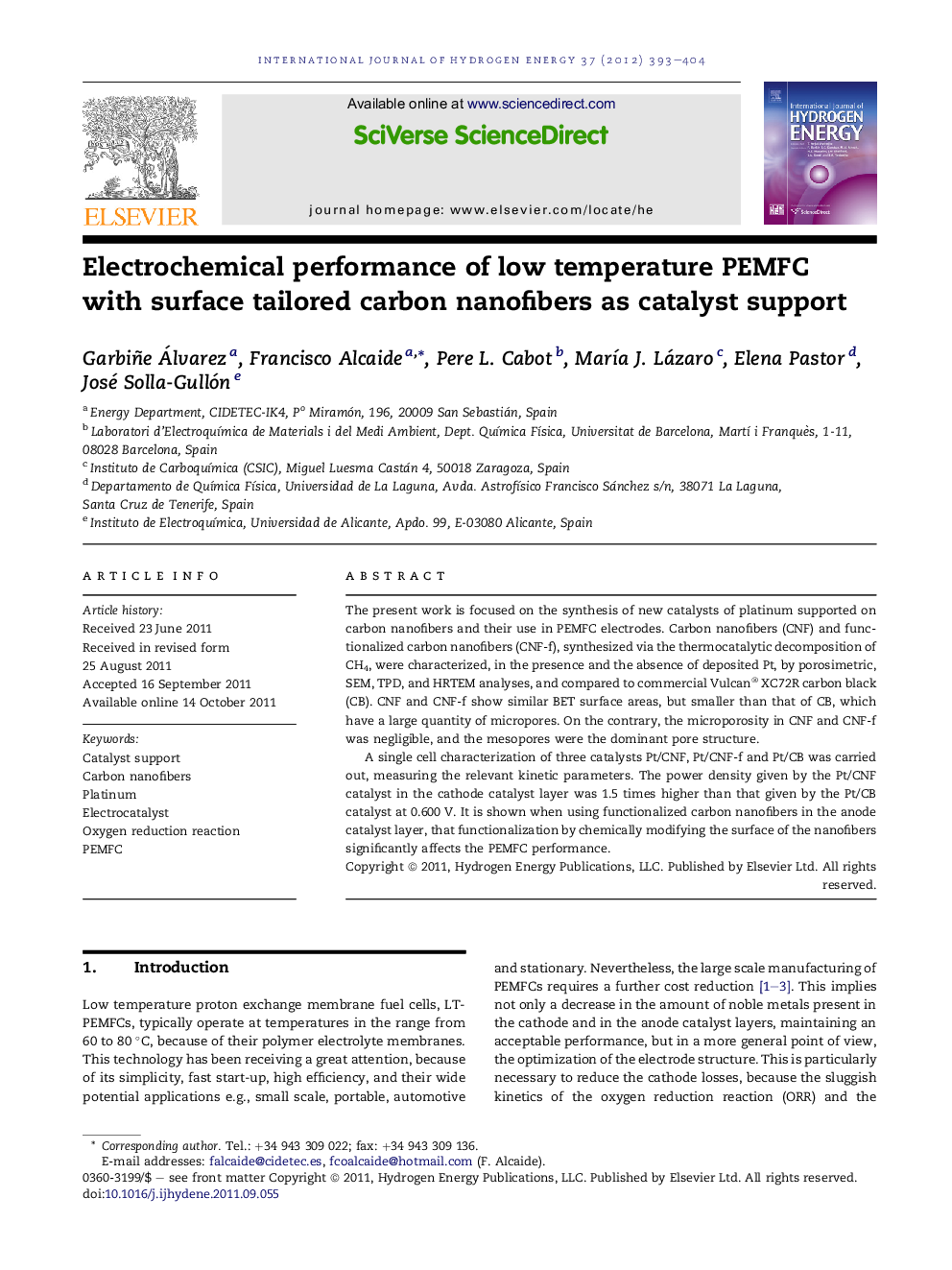| Article ID | Journal | Published Year | Pages | File Type |
|---|---|---|---|---|
| 1277154 | International Journal of Hydrogen Energy | 2012 | 12 Pages |
The present work is focused on the synthesis of new catalysts of platinum supported on carbon nanofibers and their use in PEMFC electrodes. Carbon nanofibers (CNF) and functionalized carbon nanofibers (CNF-f), synthesized via the thermocatalytic decomposition of CH4, were characterized, in the presence and the absence of deposited Pt, by porosimetric, SEM, TPD, and HRTEM analyses, and compared to commercial Vulcan® XC72R carbon black (CB). CNF and CNF-f show similar BET surface areas, but smaller than that of CB, which have a large quantity of micropores. On the contrary, the microporosity in CNF and CNF-f was negligible, and the mesopores were the dominant pore structure.A single cell characterization of three catalysts Pt/CNF, Pt/CNF-f and Pt/CB was carried out, measuring the relevant kinetic parameters. The power density given by the Pt/CNF catalyst in the cathode catalyst layer was 1.5 times higher than that given by the Pt/CB catalyst at 0.600 V. It is shown when using functionalized carbon nanofibers in the anode catalyst layer, that functionalization by chemically modifying the surface of the nanofibers significantly affects the PEMFC performance.
► Pt/CNF catalyzed cathode gives good performance in low temperature PEMFC. ► Pt/CNF catalyzed electrode composition optimized in terms of ionomer to carbon ratio. ► The surface chemistry and the microstructure of CNF influence PEMFC performance. ► Pt/CNF-funcionalized catalyzed anode gives good performance in low temperature PEMFC.
